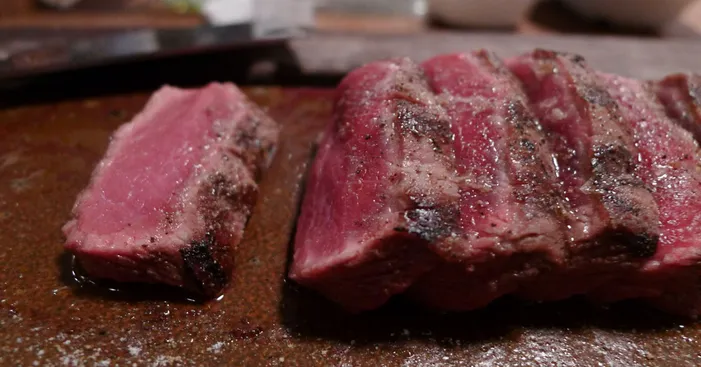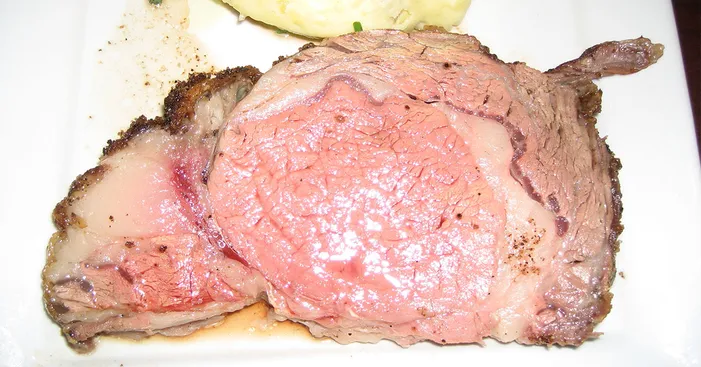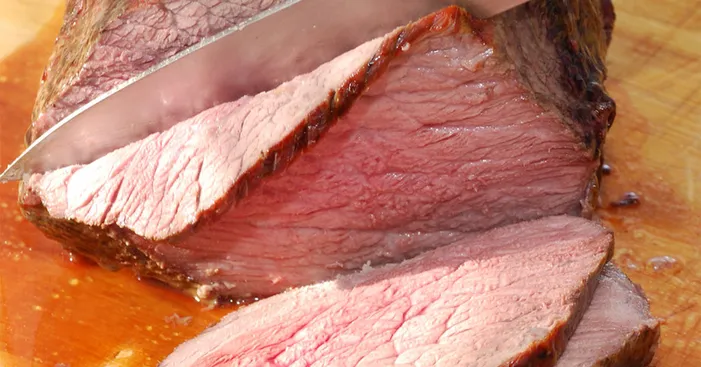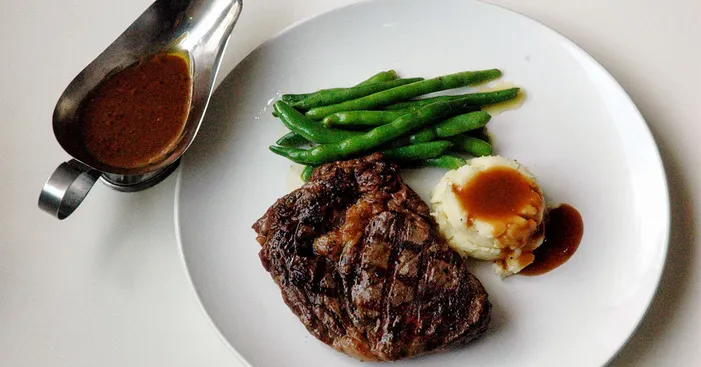Table of Contents

Elk meat is a delicious and nutritious red meat that is gaining popularity among health-conscious consumers.
It is a good source of protein, iron, and zinc, and it is low in saturated fat and calories.
Elk meat is also a good source of omega-3 fatty acids, which are beneficial for heart health.
In this blog post, we will discuss the many benefits of eating elk meat.
We will also provide some tips on how to cook elk meat so that it is tender and flavorful.
Elk health benefits:

Low-fat diet product:
Elk meat is a great choice for people who are looking for a low-fat diet product. It is only about 2% fat, compared to ground beef, which is about 20% fat.
Elk meat is also a good source of protein, with about 25 grams of protein per serving.
This makes it a good choice for people who are trying to lose weight or build muscle.
Rich source of protein:
Protein is essential for building and repairing muscle tissue.
It is also important for maintaining a healthy weight and reducing the risk of chronic diseases.
Elk meat is a good source of protein, with about 25 grams of protein per serving.
This makes it a good choice for people who are looking to increase their protein intake.
A positive effect on brain function memory:
Elk meat contains nutrients that are important for brain health, such as B vitamins, iron, and zinc.
B vitamins are essential for cognitive function, including memory and learning.
Iron is important for carrying oxygen to the brain, and zinc is important for brain development.
Studies have shown that eating elk meat can improve brain function and memory in both children and adults.
Contains an abundance of B vitamins:
Group B vitamins are essential for metabolism, which is the process by which the body converts food into energy.
Elk meat is a good source of group B vitamins, including thiamine, riboflavin, niacin, pantothenic acid, vitamin B6, biotin, and vitamin B12.
Studies have shown that eating elk meat can help to improve metabolism and boost energy levels.
Good for the nervous system:
Elk meat contains compounds that are important for the functioning of the nervous system, such as omega-3 fatty acids, magnesium, and potassium.
Omega-3 fatty acids are essential for brain health and nervous system function.
Magnesium is important for nerve function and relaxation.
Potassium is important for nerve conduction and muscle function.
Studies have shown that eating elk meat can improve nervous system function and reduce the risk of neurological disorders.
Reduces the risk of developing heart disease:
Elk meat contains compounds that are important for heart health, such as omega-3 fatty acids, iron, and potassium.
Omega-3 fatty acids can help to lower cholesterol levels and improve blood vessel function.
Iron is important for carrying oxygen to the heart muscle.
Potassium is important for regulating blood pressure and reducing the risk of blood clots.
Studies have shown that eating elk meat can help to reduce the risk of heart disease.
Reduces the risk of cancer:
Elk meat contains antioxidants, which are compounds that can help to protect cells from damage caused by free radicals.
Free radicals are unstable molecules that can damage cells and lead to chronic diseases, such as cancer.
Elk meat is also a good source of nutrients that are important for skin health, such as vitamin C and vitamin E.
Studies have shown that eating elk meat can help protect against cancer and slow down the aging process.
A great source of Iron:
Elk meat is a rich source of iron and other substances that contribute to hemoglobin production and have a positive effect on the functioning of the hematopoietic system.
People who occasionally include wapiti meat in their diet are less likely to develop anemia.
Elk meat is a good source of iron, which is essential for hemoglobin production.
Hemoglobin is a protein in red blood cells that carries oxygen to the tissues.
Elk meat is also a good source of other nutrients that are important for the hematopoietic system, which is the system responsible for producing blood cells.
Studies have shown that eating elk meat can help to prevent anemia and improve blood health.
Regulates blood sugar levels:
Elk meat contains compounds that can help to regulate blood sugar levels.
These compounds can help to improve insulin sensitivity and reduce the risk of type 2 diabetes.
Studies have shown that eating elk meat can help to improve blood sugar control in people with type 2 diabetes.
Precautions before you consume elk meat:

Moose meat is a delicious and nutritious food, but it is important to be aware of the potential risks associated with consuming it.
- Wild animals carry diseases.
- Moose are wild animals, and they can carry diseases such as encephalitis, salmonellosis, and helminth infections.
- It is important to thoroughly cook moose meat to kill any harmful bacteria or parasites.
- Pregnant women, young children, and nursing mothers should avoid moose meat.
- Moose meat can contain high levels of mercury and other heavy metals, which can be harmful to the developing brain and nervous system.
- Avoid eating the internal organs of older moose.
- Moose kidneys, heart, and liver can accumulate cadmium, a heavy metal that can damage the kidneys and liver.
- It is best to avoid eating these organs, especially from older moose.
- Limit your intake of moose meat if you have gout or other joint problems.
- Moose meat contains purines, which can break down into uric acid.
- High levels of uric acid in the blood can lead to gout attacks and other joint problems.
How to Safely Consume Moose Meat?
- Cook moose meat thoroughly.
- Moose meat should be cooked to an internal temperature of 160 degrees Fahrenheit (71 degrees Celsius) to kill any harmful bacteria or parasites.
- Avoid eating the internal organs of older moose.
- Moose kidneys, heart, and liver can accumulate cadmium, a heavy metal that can damage the kidneys and liver.
- It is best to avoid eating these organs, especially from older moose.
- Limit your intake of moose meat if you have gout or other joint problems.
- Moose meat contains purines, which can break down into uric acid.
- High levels of uric acid in the blood can lead to gout attacks and other joint problems.
If you are concerned about the risks associated with consuming moose meat, it is best to err on the side of caution and avoid it altogether.
There are many other healthy and delicious meats available, such as chicken, fish, and beans.
Using elk meat:

Elk meat is a dense, red meat similar to venison, but it is less gamey and has a more delicate flavor.
It is also very lean, with less fat than beef or chicken.
Elk meat is rarely found in the wild in North America, so most of the elk meat on the market comes from breeding farms.
When cooked properly, elk meat is tender and juicy, with a melt-in-your-mouth texture.
It is a great choice for a special occasion dinner, such as a holiday feast or a romantic meal for two.
To prepare elk meat, it is important to marinate it before cooking.
This will help to tenderize the meat and enhance the flavor.
You can marinate elk meat in a variety of different liquids, such as red wine, balsamic vinegar, or citrus juice.
Once the elk meat is marinated, you can cook it using a variety of different methods, such as grilling, pan-frying, or roasting.
Be careful not to overcook elk meat, as it can become tough.
Lithuanian Elk Meat with Sour Cream Sauce

Ingredients:
- 600g moose meat
- Salt and pepper
- 100g lard, diced
- 2 large carrots, chopped
- 2 large onions, chopped
- 2 cups beef broth
- 1 tablespoon flour
- 1 tablespoon dried mushrooms
- 1/2 cup sour cream
- Additional salt and pepper to taste
Preparation:
- Marinate moose meat in broth for 6 hours or overnight.
- Brown meat on all sides in a skillet.
- Transfer meat to a Dutch oven with carrots, onions, and beef broth.
- Cover and simmer for 2-3 hours, or until meat is tender.
- While the meat is cooking, make the sauce by browning flour in a skillet, then whisking in hot stock from dried mushrooms.
- Simmer sauce for 15 minutes, then strain it and add it to the pot with the meat and vegetables.
- Bring to a simmer and cook for 10 minutes.
- Stir in sour cream and cook until heated through.
Elk Meat Storage:

Whether you’re a seasoned hunter or just trying your hand at wild game for the first time, knowing how to properly store elk meat is essential for ensuring that it’s safe to eat.
If you plan to cook your elk meat within a couple of days, you can store it in the refrigerator.
Be sure to wrap it tightly in plastic wrap or place it in a resealable bag to prevent it from drying out.
Ground elk meat should be used within one to two days, while whole cuts of elk meat can be stored for up to three days.
If you need to store your elk meat for longer than a few days, the best option is to freeze it.
This will help to preserve its flavor and quality for up to six months.
To freeze elk meat, cut it into meal-sized portions and wrap each portion tightly in plastic wrap or freezer paper.
Place the wrapped meat in a freezer bag or container and seal it tightly.
To thaw frozen elk meat, place it in the refrigerator overnight or for several hours.
You can also thaw it in the microwave on the defrost setting, but be sure to cook it immediately after thawing to prevent the growth of bacteria.
